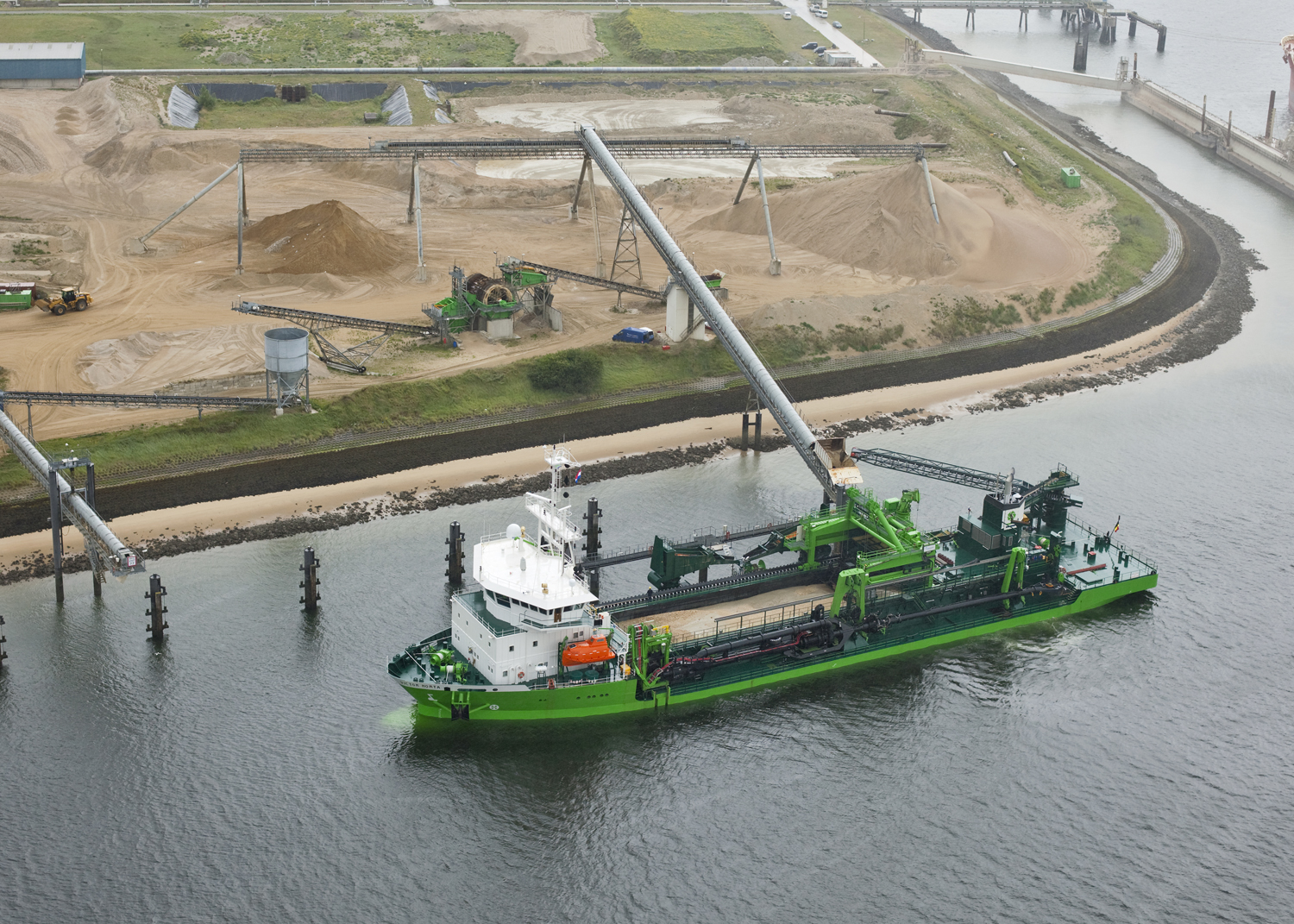Meet the sponsor: Royal IHC and the world of marine aggregate dredging
Ahead of the 2018 Marine, Sand & Gravel Group Conference 'Beyond the horizon' meet one of the conference supporters Royal IHC.
Royal IHC is a reliable supplier of innovative and efficient vessels, equipment and services for the dredging, offshore and mining markets. This also includes marine aggregate dredging. With a history steeped in Dutch shipbuilding since the mid-17th century, we have in-depth knowledge and expertise in engineering and manufacturing high-performance integrated vessels and equipment for this niche market.
The offshore dredging of marine aggregates is performed by a special type of trailing suction hopper dredger (TSHD). The TSHDs used for this type of dredging are vessels of between 80 to 150 metres in length that are equipped with specialist installations.
IHC has long been one of the main suppliers of reliable marine aggregate dredgers. We’ve been building them for decades and, in recent years, constructed two of the most advanced marine aggregate dredgers for two leading European players.
 Gravel dredger built by IHC
High operational and capital costs
Gravel dredger built by IHC
High operational and capital costs
Owners in the marine aggregate dredging market face high operational and capital costs due to long dredge cycles and the specialist equipment required. The typical dredge cycle of an aggregate dredger involves sailing to the deposit, then loading and screening, before sailing back to the wharf and unloading. Therefore, dredge cycles are relatively long and last between 24 and 36 hours.
Aggregates are mostly found far offshore in water depths up to 50 to 60 metres. This results in long sailing distances and the need for long suction pipes and even submerged dredge pumps. The loading of the material takes a significant amount of time, although the quality of the dredged materials can be improved (and value per tonne increased) by sieving with the screening installations on board. Whereas other TSHDs can typically load within an hour, a marine aggregate dredger often takes between three to eight hours.
Ultimately, unloading is subject to limitations such as onshore facilities and capacity. The on-board discharge equipment must be designed as cost-effectively and efficiently as possible. As such, vessels are equipped with high capacity dry self-unloading systems. These ensure that the vessel can return to the dredging site within the shortest time possible.
Innovating the industry
The profitability of marine aggregate dredging operations depends on performance, operational costs and sustainability. For many years, IHC has invested its efforts in the research and development of sustainable marine aggregate dredging vessels and equipment.
The overall efficiency and cost-effectiveness of the vessel can be increased by improving its control and automation, drive, unloading, and dredging systems, as well as the screening process and hull shape. IHC is constantly researching ways to enhance these systems and has grouped these efforts into three key areas: fuel efficiency; economic sailing; and faster (un)loading.
Our research, development and innovations are driven by sustainability. IHC aims to develop and supply optimal solutions, with the understanding that a combination of environmentally friendly technology and the best operational techniques can optimise operations while protecting the environment.